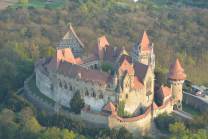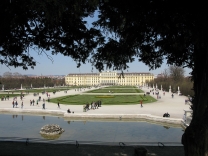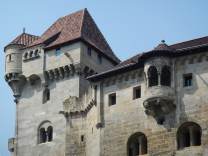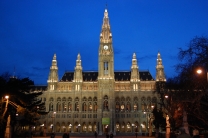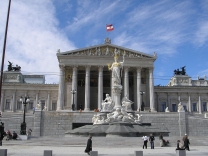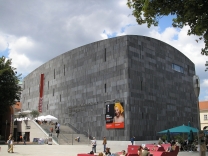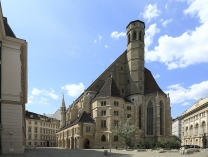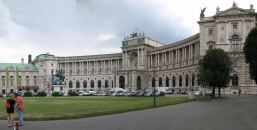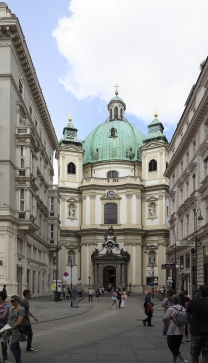Göttweig Abbey
Göttweig Abbey (German: Stift Göttweig) is a Benedictine monastery near Krems in Lower Austria.
History
Göttweig Abbey was founded as a monastery of canons regular by Blessed Altmann (c. 1015–1091), Bishop of Passau. The high altar of a chapel was dedicated in 1072, but the monastery itself not until 1083: the foundation charter, dated 9 September 1083, is still preserved in the abbey archives.
By 1094 the discipline of the community had become so lax that Bishop Ulrich of Passau, with the permission of Pope Urban II, introduced the Rule of St. Benedict. Prior Hartmann of St. Blaise's Abbey in the Black Forest was elected abbot. He brought with him from St. Blaise's a number of chosen monks, among whom were Blessed Wirnto and Blessed Berthold, later abbots of Formbach and Garsten respectively. Under Hartmann (1094–1114) Göttweig became a famous seat of learning and strict monastic observance. He founded a monastic school, organized a library, and at the foot of the hill built a nunnery where it is believed that Ava, the earliest German language poetess known by name (d. 1127), lived as an anchorite. The nunnery, which was afterwards transferred to the top of the hill, continued to exist until 1557.
During the 15th and 16th centuries however the abbey declined that between 1556 and 1564 it had no abbot at all, and in 1564 not a single monk was left here. At this crisis an imperial deputation arrived at Göttweig, and elected Michael Herrlich, a monk of Melk Abbey, as abbot. The new abbot, who held his office until 1603, restored the monastery spiritually and financially, and rebuilt it after it had been almost entirely destroyed by fire in 1580.
Abbots...








